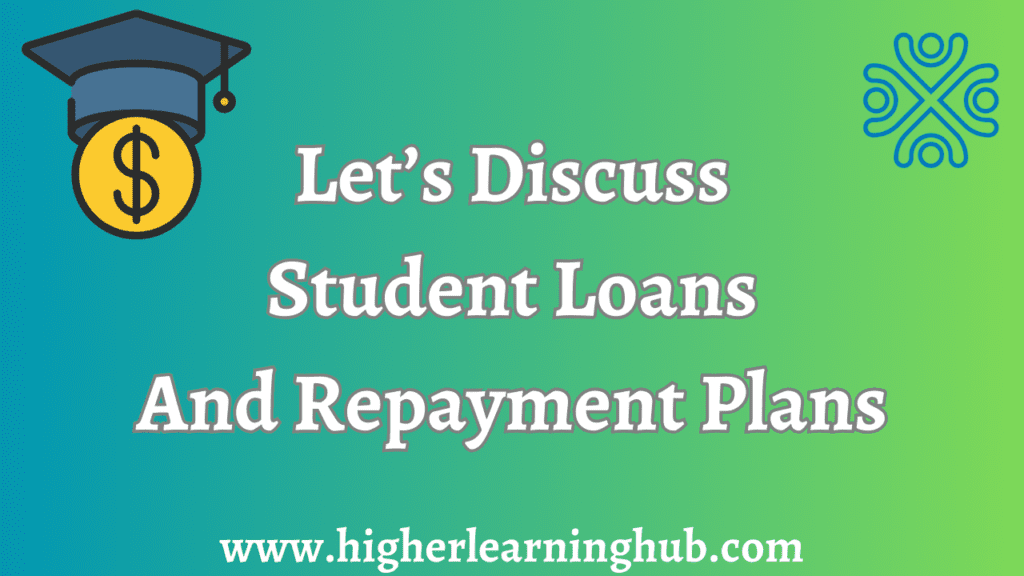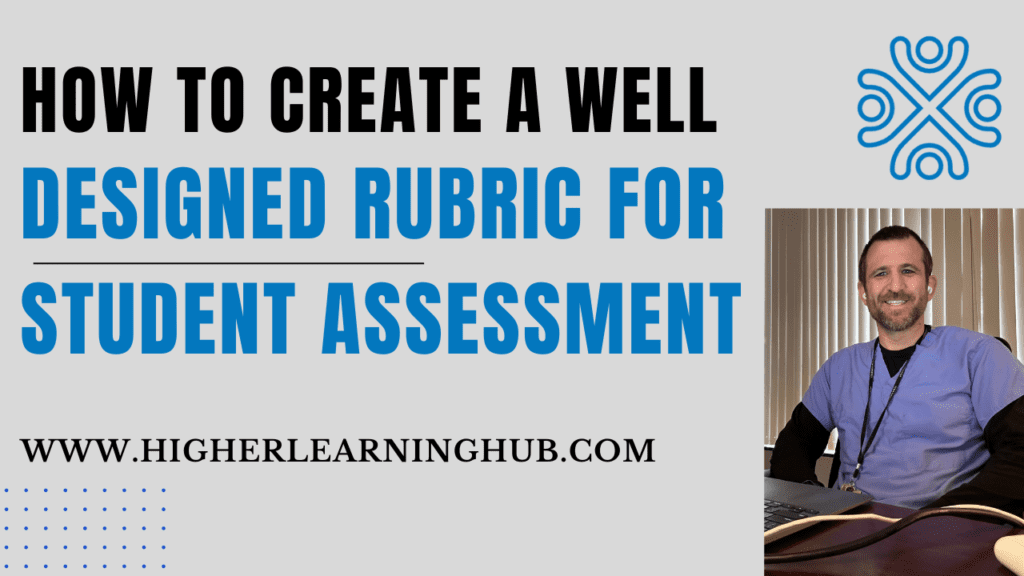Authored by Dr. Leland Jaffe, Associate Dean and Professor; Published on June 21st, 2024
Are you struggling to understand student loans and how to develop a repayment plan?!?
*Disclaimer – The information provided in this blog post is for general informational purposes only and should not be construed as financial advice. The contents of this post reflect the personal opinions and experiences of the author and are not intended to provide specific financial guidance or recommendations to any individual. Before making any financial decisions or investments, it is highly recommended that you consult with a professional financial advisor who can provide tailored advice based on your unique financial situation. The author and publisher of this blog are not responsible for any financial losses or damages that may result from reliance on the information contained in this post. By reading this post, you acknowledge that you understand and agree to this disclaimer.
Navigating student loans and repayment plans can feel overwhelming, but making informed decisions is critical for your long-term financial health. With education costs rising, understanding loan options and repayment plans is more important than ever. Whether you’re a new student or a recent graduate, knowing your choices can save you stress and money (I learned about this topic far too late). This guide will help you understand the types of student loans available, the benefits of each, and how repayment plans can fit your budget and future goals. It’s important to stay informed and take control of your financial future today.
Types of Student Loans
When it comes to student loans, it’s essential to understand the different types available. Each type has its own benefits and drawbacks, so it’s vital to know your options.
Federal Student Loans
Federal student loans are funded by the government. They often come with lower interest rates and flexible repayment options. Here are the main types of federal loans:
- Direct Subsidized Loans: These loans are for undergraduates with financial need. The government pays the interest while you’re in school, during the grace period, and during deferment.
- Direct Unsubsidized Loans: Available to both undergraduate and graduate students, these loans don’t require financial need. However, interest begins accruing as soon as the loan is taken out.
- Direct PLUS Loans: These are for graduate students and parents of dependent undergraduates. They cover the full cost of education, minus any other financial aid. Credit checks are required.
- Perkins Loans: Though no longer offered, some students might still be repaying these low-interest loans. They were available to undergraduates and graduates with exceptional financial need.
Private Student Loans
Private student loans are offered by banks, credit unions, and other financial institutions. They differ from federal loans in several ways:
- Credit-Based: Your credit score impacts your eligibility and the interest rates you qualify for.
- No Federal Protections: They lack federal benefits like income-driven repayment plans and forgiveness programs.
- Variable Interest Rates: Private loans may have variable interest rates, which can increase over time.
- Cosigner Requirement: Many students will need a cosigner to qualify for a private loan.
State-Based Student Loans
Some state governments offer their own student loan programs. These can be a helpful alternative if you need more funding beyond federal loans. Key features include:
- Residency Requirements: Often, you need to be a resident of the state offering the loan.
- Lower Interest Rates: State loans sometimes come with lower interest rates compared to private loans.
- State-Specific Benefits: Some states offer forgiveness programs or other perks for residents who work in specific fields after graduation.
Understanding these options can help you make the best decision for your educational and financial future. Stay informed and choose the best path for your needs.
Applying for Student Loans
Applying for student loans can seem intimidating at first, but breaking it down into manageable steps can make the process much easier. Whether you’re looking into federal or private student loans, knowing what to expect will help you make informed decisions.
Federal Student Loan Application Process
To apply for federal student loans, you’ll need to start with the Free Application for Federal Student Aid (FAFSA). Here’s a quick look at the steps involved:
- Gather Necessary Documents: Before you start, make sure you have your Social Security number, driver’s license, tax returns, bank statements, and any records of untaxed income.
- Create an FSA ID: You’ll need a Federal Student Aid ID to complete the FAFSA. This will be your digital signature and your key to accessing the federal student aid system.
- Complete the FAFSA: Head to the official FAFSA website and fill out the application. This will include providing your personal information and financial details, as well as your school’s information.
- List Schools: Add all the schools you are considering. They will use the FAFSA information to determine your financial aid package.
- Sign and Submit: After filling out the application, you’ll need to sign it with your FSA ID and submit it. Once submitted, your application will be processed, and you’ll receive a Student Aid Report (SAR) summarizing your information.
- Review Your SAR: Make sure all the information is correct. If there are any errors, you may need to correct and resubmit your FAFSA.
- Receive Financial Aid Offers: Each school you listed will send you a financial aid offer detailing the types and amounts of aid you qualify for, including loans, grants, and work-study options.
- Accept Your Aid: Decide which loans and other forms of aid you want to accept. Remember, you don’t have to take all the aid you’re offered—consider borrowing only what you need.
Private Student Loan Application Process
Applying for private student loans is a bit different from the federal process. Here’s what you need to know:
- Research Lenders: Start by researching different private lenders. Banks, credit unions, and online lenders offer private student loans with varying interest rates and terms.
- Check Credit Requirements: Unlike federal loans, private loans often require a credit check. Your credit score will impact your loan approval and the interest rate you’re offered. If you have limited or poor credit history, you might need a co-signer.
- Compare Loan Options: Look at the interest rates, repayment options, and loan terms from several lenders. This helps you find the best deal for your needs.
- Gather Financial Information: Just like with the FAFSA, you’ll need to provide personal and financial information. This usually includes your Social Security number, income details, and the amount you want to borrow.
- Apply Online: Most private lenders have an online application process. Fill out the required information and submit your application.
- Complete a Credit Check: The lender will perform a credit check to assess your eligibility. If you’re using a co-signer, their credit will also be reviewed.
- Receive Loan Offers: Once your application is processed, you’ll receive loan offers. These will detail the approved loan amount, interest rate, and repayment terms.
- Accept and Sign: Review the loan terms carefully. If you agree with the terms, you’ll need to sign the loan agreement. Many lenders offer digital signing options for convenience.
Understanding these application processes can give you confidence and clarity as you take this important step toward funding your education.
Repayment Plans for Student Loans
Repaying student loans can be daunting, but knowing your repayment options can ease the burden. Different plans cater to different financial situations. It’s important to have a plan in place before graduation so that you can hit the ground running. Here’s a guide to help you understand each one.
Standard Repayment Plan
The Standard Repayment Plan is straightforward. It breaks your loan into fixed monthly payments over 10 years. It’s ideal for borrowers who want to pay off their loans quickly and can afford consistent payments. You’ll end up paying less interest over time compared to other plans.
Who it’s best for:
- Borrowers with stable income
- Those who want to finish paying off their loans quickly (which pertains to all of us!)
- Individuals looking to save money on interest (again, which pertains to all of us!)
Graduated Repayment Plan
The Graduated Repayment Plan starts with lower payments that gradually increase, typically every two years. This plan assumes your income will grow over time, making higher payments easier as you advance in your career.
Features of a Graduated Repayment Plan:
- Starts with lower monthly payments
- Payments increase over time
- The repayment term is usually 10 years
Who it’s best for:
- Recent graduates expecting their income to rise
- Individuals starting in entry-level positions
Income-Driven Repayment Plans
Income-Driven Repayment (IDR) plans adjust your monthly payment based on your income and family size. They offer forgiveness after 20-25 years of qualifying payments. There are several types:
- Income-Based Repayment (IBR)
- Payments are capped at 10-15% of your discretionary income.
- Forgiveness after 20-25 years of qualifying payments (depending on when you first received loans).
- Pay As You Earn (PAYE)
- Payments are 10% of your discretionary income.
- Forgiveness after 20 years of qualifying payments.
- Must have high debt relative to income.
- Revised Pay As You Earn (REPAYE)
- Payments are 10% of your discretionary income.
- Forgiveness after 20 years for undergraduate loans, 25 years for graduate loans.
- Available to all Direct Loan borrowers, regardless of financial hardship.
Who they’re best for:
- Borrowers with high debt relative to income
- Individuals with fluctuating incomes
- Those seeking loan forgiveness
Extended Repayment Plan
The Extended Repayment Plan extends your loan term up to 25 years. Payments can be fixed or graduated. This plan lowers your monthly payments but increases the total interest you’ll pay over time.
Benefits of an Extended Repayment Plan:
- Lower monthly payments
- More manageable for those with large loan balances
Who it’s best for:
- Borrowers with significant student loan debt
- Those needing lower monthly payments to fit their budget
Understanding these repayment options can help you make informed decisions about managing your student loans. Choose the plan that best fits your financial situation and goals.
Loan Forgiveness Programs


Loan forgiveness programs can be a fantastic option for those who qualify. By forgiving a portion or all of your student loan debt, these programs can make it easier to manage your finances. There are several different programs available, each with its own set of rules and benefits.
Public Service Loan Forgiveness (PSLF)
Public Service Loan Forgiveness (PSLF) is a program designed to help those who work in public service jobs. The goal is to forgive remaining student loan debt after 10 years of qualifying payments.
Requirements of a Public Service Loan Forgivementt:
- Employment: You must work full-time for a qualifying employer. This includes government organizations, non-profits, and some other public service employers.
- Loans: Only Direct Loans qualify for PSLF. If you have other types of federal loans, you can consolidate them into a Direct Consolidation Loan.
- Payments: Make 120 qualifying payments under a qualifying repayment plan, such as an Income-Driven Repayment (IDR) plan.
Benefits:
- Complete Forgiveness: After making 120 eligible payments, the entire remaining balance on your Direct Loans will be forgiven.
- Tax-Free: The forgiven loan amount under PSLF is not considered taxable income.
Teacher Loan Forgiveness
Teachers can also benefit from loan forgiveness programs. If you teach full-time for five consecutive years in a low-income school or educational service agency, you may qualify for the Teacher Loan Forgiveness program.
Eligibility Criteria:
- Employment: Must be a full-time teacher for five consecutive years in a low-income school or educational service agency.
- Loans: Federal Direct Loans and Stafford Loans qualify. Perkins Loans can be forgiven through a different program.
- Certification: You need to be a highly qualified teacher, meaning you must meet state certification and licensure requirements.
Benefits:
- Forgiveness Amount: You can receive up to $17,500 in loan forgiveness if you teach subjects like mathematics or science. For other subjects, the maximum amount is $5,000.
Deferment and Forbearance Options
Do you know the difference between deferment and forbearance?
When you’re struggling to make student loan payments, there are options available to help you manage. Two key options are deferment and forbearance. Each has its own rules and benefits, which can provide temporary relief during tough times.
Deferment
Deferment is a way to temporarily pause your student loan payments. This option can be incredibly helpful if you’re going through a financially rough period. Here’s how it works:
What is Deferment?


During deferment, you can stop making payments on your student loans for a specific period. Some types of federal loans (subsidized loans) even stop accruing interest during this time, which can help you avoid additional debt.
How to Apply for Deferment
Applying for deferment involves a few key steps:
- Check Eligibility: Not all loans qualify for deferment. Typically, federal student loans such as Direct Loans, Perkins Loans, and Federal Family Education Loans (FFEL) are eligible.
- Fill Out the Form: You’ll need to complete a deferment request form, which is available from your loan servicer.
- Submit Documentation: Depending on the type of deferment you’re seeking, you might need to provide additional documentation. For example, if you’re applying for an economic hardship deferment, you’ll need to show proof of your financial situation.
- Await Approval: After you submit your application, wait for the loan servicer’s approval. During this period, continue making payments unless you’re told otherwise.
Types of Loans That Qualify for Deferment
- Federal Direct Loans: Subsidized and unsubsidized loans can qualify, though interest still accrues on unsubsidized loans.
- Perkins Loans: These loans can be deferred, and interest does not accrue during the deferment.
- Federal Family Education Loans (FFEL): Both subsidized and unsubsidized FFEL loans can qualify for deferment.
Forbearance


Forbearance is another option to pause or reduce your student loan payments. Unlike deferment, interest will continue to accrue on all types of loans, which could increase your total loan balance. Here’s what you need to know:
What is Forbearance?
Forbearance lets you temporarily pause or reduce your loan payments for up to 12 months at a time. There are two types of forbearance: general and mandatory.
Types of Forbearance
- General Forbearance (Discretionary Forbearance)
- Eligibility: Borrowers can request this if they are experiencing financial difficulties, medical expenses, or employment changes.
- Application: You need to apply through your loan servicer, who will decide whether to grant it.
- Interest: Interest will accrue on all loans, including subsidized loans.
- Mandatory Forbearance
- Eligibility: Situations like serving in AmeriCorps, qualifying for specific military benefits, or working in a medical or dental internship may make you eligible for mandatory forbearance.
- Application: If you meet the criteria, your servicer must grant the forbearance.
- Interest: Just like with general forbearance, interest will accrue on all loans during the forbearance period.
Implications for Interest Accrual
Interest accrual during forbearance can lead to a higher loan balance:
- Subsidized and Unsubsidized Loans: Interest will continue to accrue, and you will be responsible for paying this interest once the forbearance period ends.
- Capitalized Interest: If you don’t pay the interest during forbearance, it may be added to your principal balance, increasing the total amount you owe.
Understanding both deferment and forbearance and how they impact your loans can help you make better choices if you’re facing economic hardship. Always weigh the long-term costs before deciding which option is right for you. Remember that the goal is to have compounding interest work for you, and not against you.
Strategies for Managing Student Loan Debt
Managing student loan debt involves careful planning and smart strategies. Whether you are just starting to repay your loans or looking for ways to ease the financial burden, understanding different approaches can make a huge difference. Having sound knowledge regarding your student loans and repayment plans upon graduation can have a significant positive impact on your future financial health. Take it from me, I learned about personal finance and debt repayment strategies too late into my professional career.
Budgeting and Financial Planning
Creating a budget is essential in managing student loan payments. Budgeting helps you see where your money goes and ensures you have enough to cover your loan payments. It’s a good idea to try to live like a resident for the first few years into practice – as this will help keep expenses low and that extra income can go directly to your higher-interest loans.
- Track Your Expenses: Start by writing down all your monthly expenses. This includes rent, groceries, utilities, and entertainment. Use apps or spreadsheets to make this easier.
- Assess Your Income: Calculate your total monthly income from all sources. Compare this with your expenses to see if you’re living within your means.
- Prioritize Loan Payments: Allocate a portion of your income to student loan payments first. Consider this a non-negotiable expense, just like your rent or utility bills.
- Cut Unnecessary Costs: Identify areas where you can cut back. Maybe you can cook at home more often instead of eating out, or cancel unused subscriptions. (avoid lifestyle creep)
- Set Financial Goals: Have clear financial goals. Whether it’s paying off your debt within ten years or saving for an emergency fund, having goals helps you stay focused.
- Automate Payments: Set up automatic payments for your student loans. This ensures you never miss a payment and might even earn you some interest rate reductions.
Refinancing and Consolidation
Refinancing and consolidating student loans can help lower your interest rates or make your payments more manageable. Here’s how they work:
Refinancing: When you refinance, you take out a new loan to pay off your existing student loans. This new loan often comes with a lower interest rate, which can save you money over the life of the loan.
- Compare Lenders: Shop around to find the best refinancing rates. Many lenders offer online tools to see what rate you qualify for without a hard credit check.
- Check Your Credit Score: A higher credit score can get you better rates. If your score isn’t great, work on improving it before you refinance.
- Consider Loan Terms: Choose a loan term that fits your financial situation. A shorter term means higher monthly payments but less interest paid overall. A longer term means lower monthly payments but more interest over time.
Consolidation: Loan consolidation combines multiple federal student loans into one loan with a single monthly payment.
- Simplify Payments: If you have several federal loans, consolidation makes it easier to manage them with a single payment.
- Fixed Interest Rate: The new interest rate is a weighted average of your existing rates, rounded up to the nearest 1/8th percent.
- Qualify for Different Plans: Consolidating can make you eligible for different loan repayment plans or forgiveness programs.
Seeking Professional Advice For Student Loans and Repayment Plans
Sometimes managing student loans can get complicated. That’s when professional advice can be invaluable. Here’s how consulting a professional can help:
- Financial Advisors: They can help you create a personalized financial plan. Advisors look at your overall financial situation, including income, expenses, investments, and debt, to craft a strategy that works for you. (check out our blog post on improving financial literacy)
- Student Loan Counselors: Specialized in dealing with student loans, they can guide you through repayment plans, and consolidation options, and even assess your eligibility for loan forgiveness programs.
- Tax Advisors: Student loan interest can sometimes be deductible on your taxes. Tax advisors can help you understand this and other tax benefits related to education expenses.
How to Choose the Right Advisor To Better Understand Student Loans and Repayment Plans:
- Credentials: Ensure the advisor is certified. Look for designations like Certified Financial Planner (CFP) or Accredited Financial Counselor (AFC).
- Experience: Choose someone with experience in student loan management. This ensures they are well-versed in the nuances of student loan laws and regulations.
- References and Reviews: Ask for references or read reviews. Personal recommendations can also guide you to a reliable advisor.
Taking control of your student loans might feel like a big task, but with the right knowledge and strategies, you can manage your debt effectively. Keep track of your finances, explore refinancing or consolidation options, and don’t hesitate to seek professional advice when needed.
Student Loans and Repayment Plans – Conclusion
Understanding student loans and repayment plans is essential for your financial well-being. Whether you choose federal, private, or state loans, knowing the benefits and drawbacks of each can save you time and money.
Selecting the right repayment plan is crucial based on your income and financial goals. From standard to income-driven plans, there’s an option that will best fit your needs.
Remember to explore loan forgiveness programs and deferment/forbearance options if you face financial hardships. These can provide significant relief.
Take control of your student loans by budgeting wisely, avoiding lifestyle creep, considering refinancing or consolidation, and seeking professional advice when needed. Stay informed and proactive to manage your debt effectively and secure your financial future.







